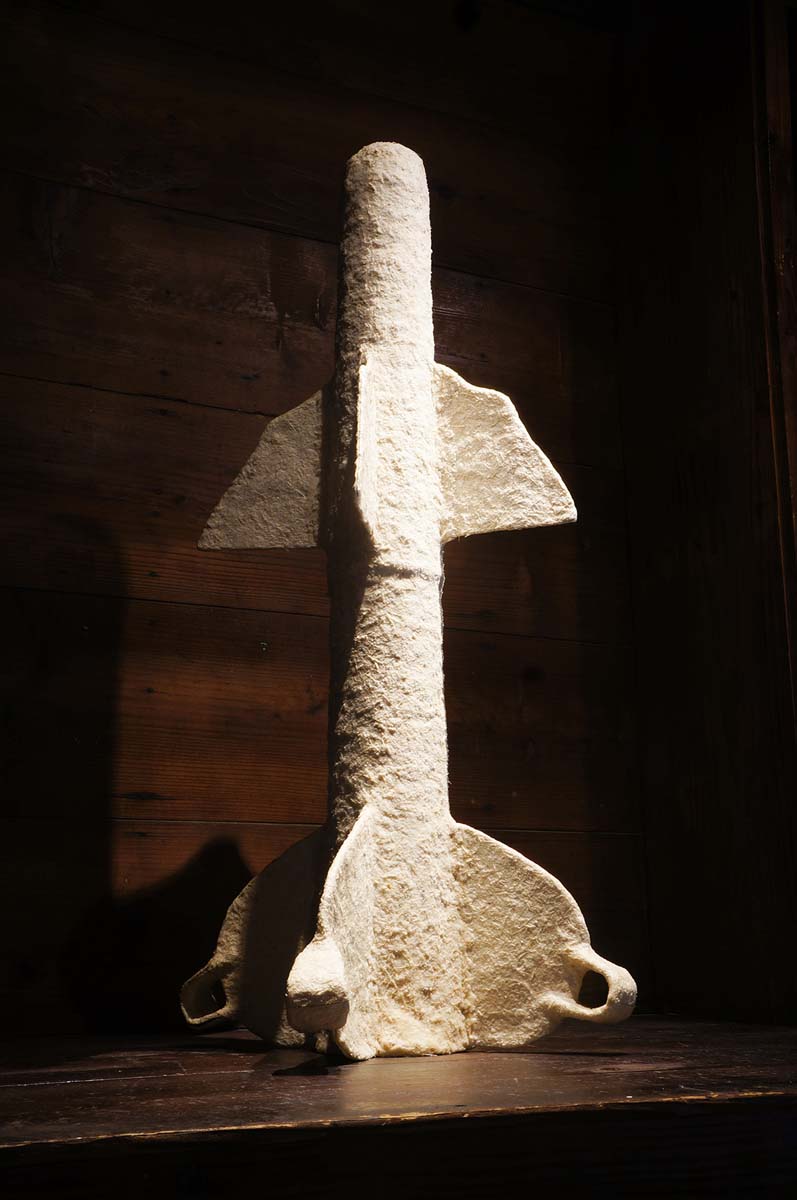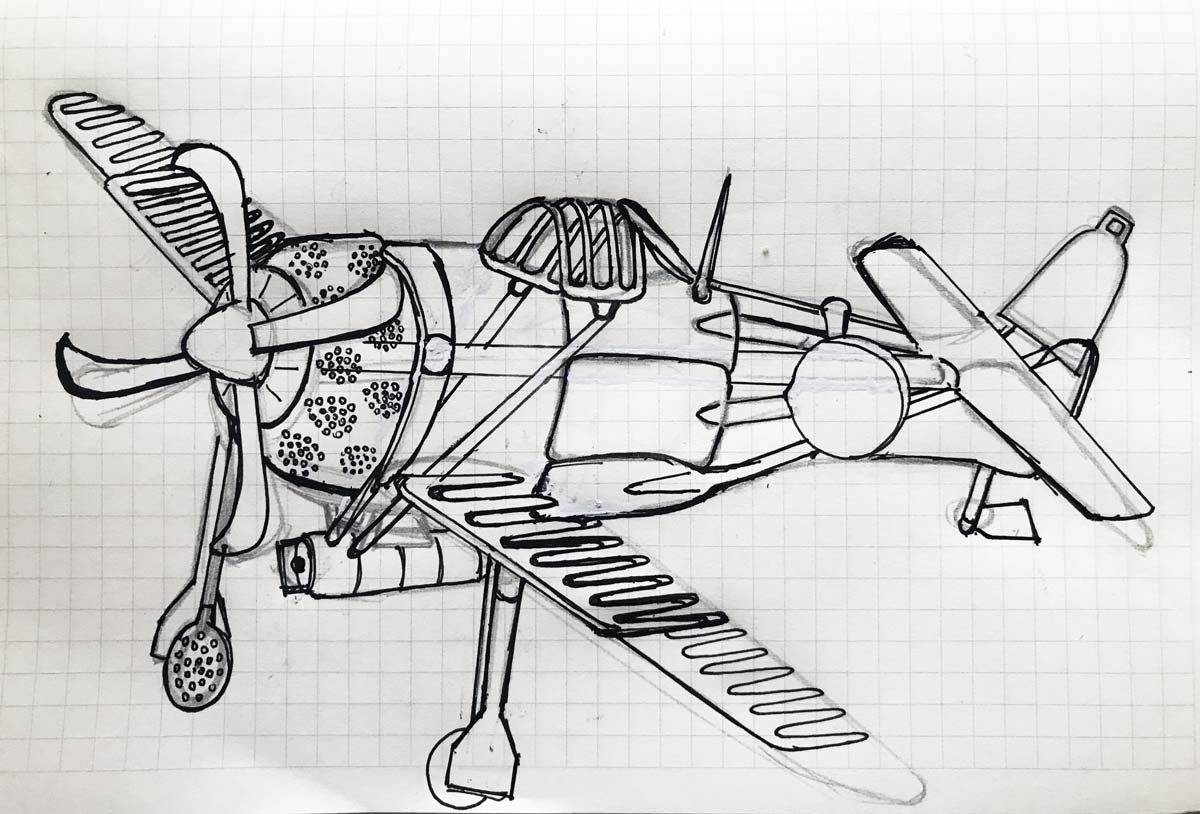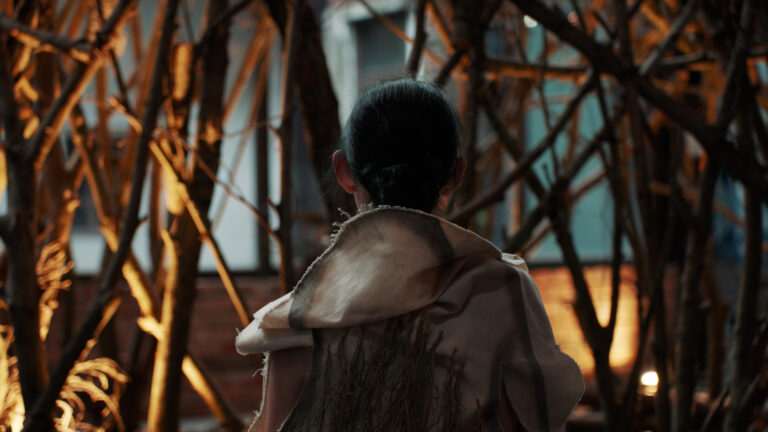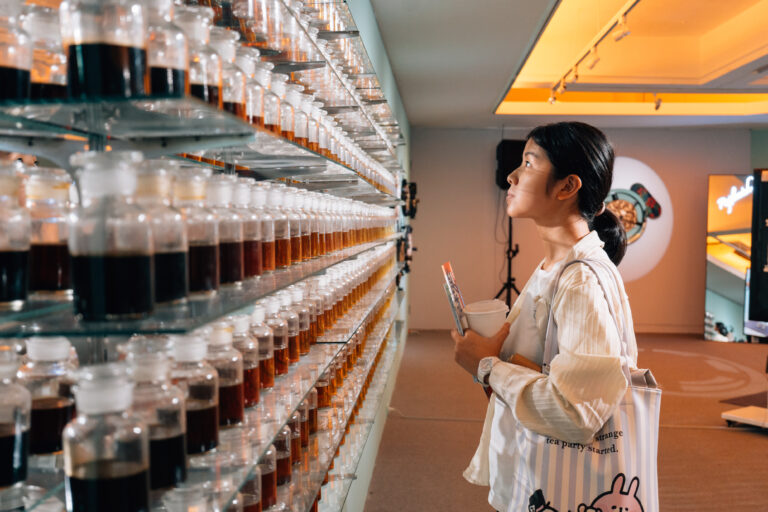“Sugarcane Fiber, Molasses, Ethanol-blended Aviation Gasoline. Just What Is It That Makes Today’s SUGARCANE FIELDS So Different, So Appealing?”, 2019
Sugarcane fiber, bamboo splits
Presented at Tsung-Yeh Art and Culture Center, Tainan, Taiwan
Sucrose was one the first exports that brought Taiwan into the fold of world trade and economy in the 17th century and made large profits for the Dutch East India Company. The Yuan dynasty explorer Wang Da-Yuan (1311-1350) wrote in his “Daoyi Zhilüe” (島夷誌略) that on the island of Taiwan, “boiled seawater becomes salt, fermented sugarcane pulp becomes wine.” The original purpose of growing sugarcane was to make wine. When sugar production became an industry and its economic benefits were discovered, “wine making” was replaced by “sugar making”.
Taiwan’s farmland expanded greatly under the Kingdom of Tungning (1661-1683). Later, during the Japanese occupation (1895-1945), the government supported Japanese companies to set up modern sugar factories all over Taiwan and the production and processing of cane sugar increased significantly. For the Japanese government at the time, Taiwan was like a gold mine. In addition to producing large amounts of sucrose, it also refined the “molasses” collected during the sucrose production for fermentation under the national fuel policy during the Second World War. Production of refined high-purity butanol as flight fuel for Japan’s “South Forward Policy” made up for the fuel shortages after the oil fields in the South Pacific were blocked by the U.S. military.
I am interested in sucrose as an agricultural product and its subsequent transformation into a commercial and household product and later military use. I created a variety of farm tools out of bagasse and pieced them together to make a model of a Japanese fighter plane based on the “Shiden Kai”. The model plane was exhibited in 2019 at the Tsung-Yeh Arts and Cultural Center, site of the former Meiji Sugar Co. Ltd. It is an ironic work, which explores the value and transformation of sucrose in different periods, the vast communal efforts involved in the construction of the plane, and compares with the destruction of war and the nothingness thereafter.
Presented at “2019 Madou Sugar Industry Art Triennial”
2019.2.1 – 2019.3.3
Curator|Tsai Ming-Jiun
Tsung-Yeh Art and Culture Center, Tainan, Taiwan
No. 5 TsungYeh, Nanshi Village, Madou District, Tainan City 721, Taiwan.
9:00 AM~17:00 PM, Wednesdays to Sundays.










